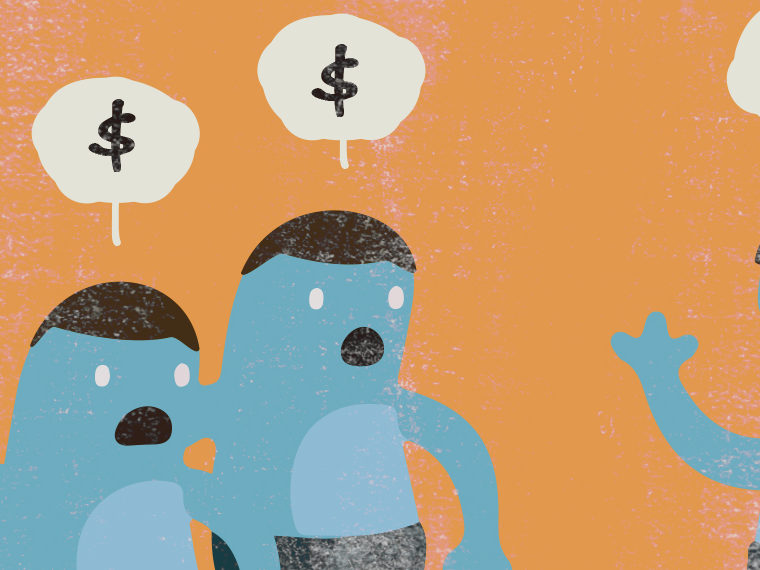Research shows individuals aren’t necessarily turned off when they know they are being coaxed toward a specific choice
The social science of influencing individual behavior through the design and presentation of choices — à la, are you opted in to retirement savings by your employer or must you choose to join? — has been expanding fast.
In the decade since the book Nudge served as a manifesto for how the design of choice environments impacts decisions, many countries set up official government units tasked with how best to incorporate nudges into public policy; and research has established that nudges are indeed cost-effective ways to advance public policy initiatives.
As the field of nudges has transformed from novelty to mainstream policy, ethical scrutiny has become part of the conversation. The question is whether even the most well-intentioned nudge designed to coax someone to a decision that improves their well-being runs the risk of being manipulative.
Opt In to the Review Monthly Email Update.
Duke’s H. Min Bang, UCLA Anderson’s Suzanne B. Shu and Princeton’s Elke U. Weber conducted two experiments to explore whether individuals recoil when they are made aware of the “choice architecture” that is being used to influence behavior.
In an article published in the journal Behavioural Public Policy, Bang, Shu and Weber report that even once we are explicitly made aware of the design of a specific nudge, we aren’t turned off. Nudge transparency doesn’t reduce our estimation of a nudge’s effectiveness or lessen acceptance of its use.
The researchers did find that we are inclined to think a nudge will be more effective for someone else than for ourselves, though when we explicitly are put through an exercise where we experience a nudge, we are more sold on its effectiveness than when we are simply told about the purpose of a nudge.
Another finding across two experiments the researchers conducted is that an individual’s sense of a nudger’s intentions can impact buy-in. (Further, other research has shown a poorly designed nudge can backfire when its intentions are plain.)
Lifting the Choice Architecture Curtain
In the first study, the researchers verbally explained to 242 participants the outcomes of three choice architecture scenarios popular among academics: the possibility that overeating at a buffet can be reduced by supplying smaller plates; whether acceptance of an airplane surcharge is likelier when it is framed as a carbon offset rather than a carbon tax; and whether making organ donation opt-out is more effective in committing organ donators than making it opt-in.
Bang, Shu and Weber added another layer to the experiment by changing up who was presented as the designer of the nudge to explore how the perceived intention of a nudger may influence perceptions. For the smaller plate design scenario, participants were told it was created by either a local restaurant, a government cafeteria or a close friend. The carbon fee source was either the airline selling the ticket or the federal government. For organ donation, the source was either a health insurance company or a government-backed organ donation initiative.
After reading all about the different frames, participants were asked to weigh in on their sense of a nudge’s effectiveness on a scale of 1 (strongly disagree) to 7 (strongly agree). The same scale was used to measure the acceptability of a given nudge.
Across the three scenarios, participants were on board with effectiveness, but more so when they were judging how a nudge would work on someone else.
For instance, the average effectiveness score for the smaller plate nudge (when presented as designed by a restaurant) was 4.24 when participants were reporting how effective it would be for them, compared to 4.57 when weighing effectiveness on others. That trend held up on the carbon tax and organ donation tests as well, regardless of who was presented as the nudge creator.
In terms of acceptability, the researchers calculated how the level of reported effectiveness influences buy-in. When participants were considering a nudge’s impact on someone else, a higher effectiveness score raised the acceptability score as well. The connection between effectiveness and acceptability was weaker when individuals gave a higher effectiveness score to themselves.
Given the importance of getting individuals to see the value of nudges for their own well-being, the researchers used another experiment to see if increasing one’s connection to the machinations of choice architecture could increase one’s feelings about its effectiveness.
They put a fresh batch of 226 participants through two types of framing exercises: As in the first experiment, the subjects were told about a variety of framing scenarios and asked to rate their effectiveness and acceptability. They were also put through exercises drawing on past choice-architecture research, which gave them the visceral experience of being presented with two different frames of a given scenario and being asked to weigh in on their choice.
For example, one scenario explained two possible solutions to an Asian Disease outbreak; one was risky and the other was considered more certain, and the choice architecture framed the potential for lives saved (a positive frame) and lives lost (a negative frame).
Bang, Shu and Weber found that perceived effectiveness of a nudge was higher when participants experienced the nudge rather than have it explained to them. And for participants who were eventually told they had made inconsistent choices based on the two frames of a given scenario, they then rated the effectiveness even higher. That suggests anyone in the nudge business might want to develop programs that actively engage the target audience to experience a nudge.
Good Intentions?
In terms of rating effectiveness of a given nudge for our own benefit, we’re less thrilled when the nudger is the government or business, and more inclined to give a higher effectiveness score if the nudge came from a friend.
The same was true when participants rated the acceptability of a given nudge. But there was no uniformity on whether we find a nudge more or less acceptable when it is delivered by a corporation or the government: In four different scenarios the researchers found that sometimes participants were okay with the corporation/government as nudge designer, and sometimes not. The researchers posit that “it is not the source per se, but the source’s perceived intentions that make a design decision less publicly acceptable.”
Nudgers take note.
Featured Faculty
-
Suzanne Shu
Professor Emeritus of Marketing
About the Research
Bang, H.M., Shu, S.B., & Weber, E. U. (2018). The role of perceived effectiveness on the acceptability of choice architecture. Behavioural Public Policy, 1–21. doi: 10.1017/bpp.2018.1






